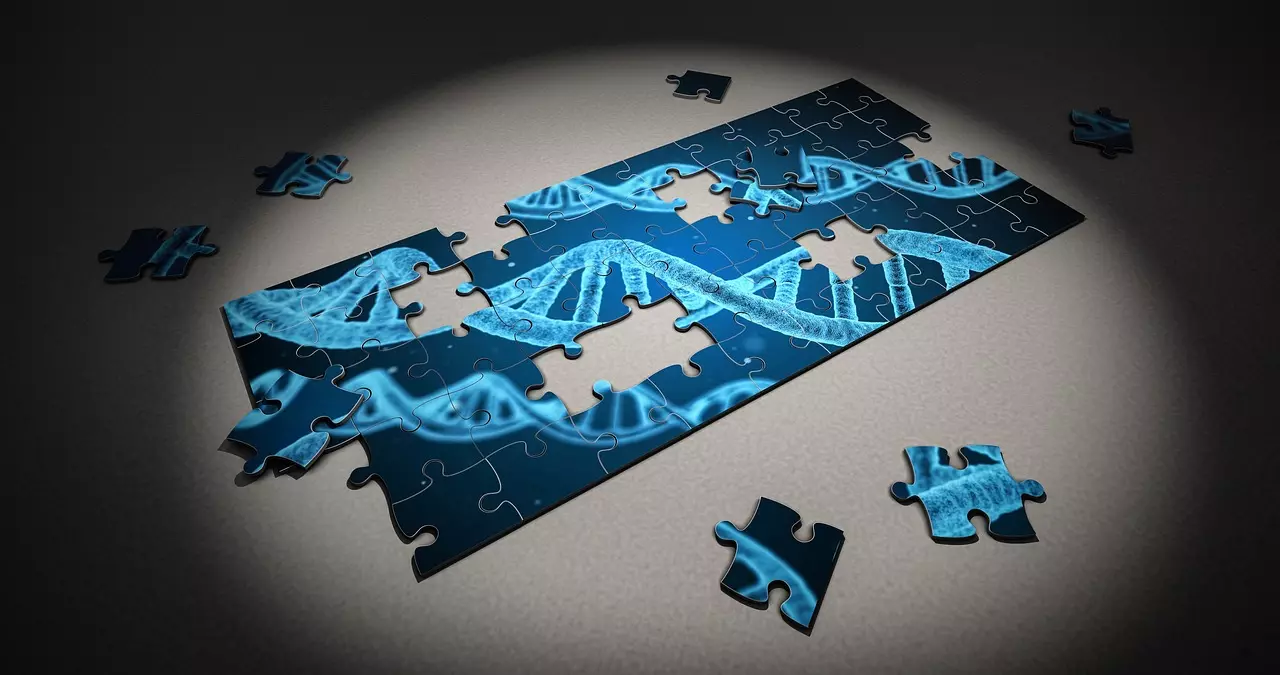[Originally published as the last bit of the much longer RSR: List of Genomes that Just Don’t Fit]
“6,000 year-old” Mitochondrial Eve
As the Bible calls “Eve… the mother of all living” (Gen. 3:20), genetic researchers have named the one woman from whom all humans have descended “Mitochondrial Eve.” But in a scientific attempt to date her existence, they openly admit that they included chimpanzee DNA in their analysis in order to get what they viewed as a reasonably old date of 200,000 years ago (which is still surprisingly recent from their perspective, but old enough not to strain Darwinian theory too much).
But then as widely reported including by Science magazine, when they dropped the chimp data and used only actual human mutation rates, that process determined that Eve lived only six thousand years ago! In Ann Gibbon‘s Science article, “Calibrating the Mitochondrial Clock,” rather than again using circular reasoning by assuming their conclusion (that humans evolved from ape-like creatures), they performed their calculations using actual measured mutation rates. This peer-reviewed journal then reported that if these rates have been constant, “mitochondrial Eve… would be a mere 6000 years old.”
See also the journal Nature and creation.com’s “A shrinking date for Eve,” and Walt Brown’s assessment. So here comes bias and confusion to Darwin’s rescue. For, according to an international team of evolutionists from leading institutions, there is tremendous and unpredictable variation in mutation rates, and unexpected inconsistencies between short-term and alleged long-term evolution. Thus of course this gives evolutionists wide interpretive latitude.
And expectedly though, evolutionists have found a way to reject their own unbiased finding (the conclusion contrary to their self-interest) by returning to their original method of using circular reasoning, as reported in the American Journal of Human Genetics, “calibrating against recent evidence for the divergence time of humans and chimpanzees,” to reset their mitochondrial clock back to 200,000 years.
Mankind Descends from Y-Chromosomal Adam
(although he should be called “Y-Chromosomal Noah”). While we inherit our mtDNA only from our mothers, only men have a Y chromosome (which incidentally genetically disproves the claim that the fetus is “part of the woman’s body,” since the little boy’s Y chromosome could never be part of mom’s body).
Based on the extraordinary lack of mutational differences in this specifically male DNA, the Y-chromosomal Adam would have lived only a few thousand years ago. (He’s significantly younger than mtEve because of the genetic bottleneck of the global flood.) Yet while the Darwinian camp wrongly claimed for decades that humans were nearly 99% genetically similar to chimps, secular scientists today, using the same type of calculation only more accurately, have unintentionally documented that chimps are about as far genetically from what makes a human being a male, as mankind itself is from sponges!
Geneticists have found now that sponges are 70% the same as humans genetically, and separately, that human and chimp Y chromosomes are “horrendously” 30% different.
Finally, remember that God created various kinds of organisms with each kind containing many, even millions, of individuals. Yet He made only two human beings, Adam and Eve. So whereas by the end of the creation week, undoubtedly there were millions or even billions of individual organisms of various grasses, insects, bacteria, etc., and already “the waters abounded” with sea creatures, by that first Saturday, there were only two people on the whole face of the earth! Thus it has been observed that, “humans have some of the least genetic variation of all animals.”
The Whole Tree of Life is Evolutionarily Messed Up
- Famed Evolutionary Microbiologist Says Incongruities Everywhere: The evolutionary biophysicist Carl Woese, famous for defining a new domain of life, Archaea, admitted in PNAS that, “Phylogenetic incongruities can be seen everywhere in the universal tree, from its root to the major branchings within and among the various taxa to the makeup of the primary groupings themselves.”
- New Scientist Says Darwin Was Wrong on the Tree of Life: Recall the historic cover story, Darwin was Wrong about the Tree of Life! Darwin’s theory of the tree of life (named after the real tree described in Genesis), according to New Scientist was as important as his theory of natural selection. However, of the thousands of species evaluated so far, more than half are not the product of a genetic biological pathway represented by a tree (or a bush for that matter). And as reported on RSR, the remains of Darwin’s tree, the branches now laying around on the ground, have been thrown into the shredder with the completed sequencing of gorilla, kangaroos, sponges, and worms! See also the excerpts from the New Scientist article in the RSR debate with AronRa.
- Cows, Snakes, and… Dolphins? “The cow genome contains a piece of snake DNA…” according to that New Scientist Darwin was Wrong about the Tree of Life article, p. 38 with Ed Yong at National Geographic writing about “How a quarter of the cow genome came from snakes.” Of course as evolutionists do, New Scientist merely comes up with a story that accounts for this and for any and all contradictory evidence. Darwinists are like Star Wars trivia buffs, able to distinguish between a juvenile Wookiee and a mature Ewok, and explain from geology what froze the oceans on Hoth and how Tatooine was covered by desert, and when a contradiction surfaces, they merely rewrite the story. Falsification not allowed. Formerly, New Scientist had reported that cows are more closely related to dolphins than they are to horses.
- Elephants and Moles: Known from way, way back, in 1998 (and from continuing research), the elephant shrew is genetically closer to an actual elephant than it is to other shrews, as reported by Roger Lewin in New Scientist.
- MicroRNA Chopping Down Darwin’s Tree: From Nature, June 2012, “Tiny molecules called microRNAs are tearing apart traditional ideas about the animal family tree.” Says Dr. Kevin Peterson, “I’ve looked at thousands of microRNA genes, and I can’t find a single example that would support the traditional tree.”
The Dartmouth biologist “had originally intended to validate the traditional mammal tree, not chop it down. As he was experimenting with his growing microRNA library, he applied it to mammals because their tree was so well established that they seemed an ideal test. Alas, the data didn’t cooperate. If the traditional tree was correct, then an unprecedented number of microRNA genes would have to have been lost, and Peterson considers that highly unlikely. ‘The microRNAs are totally unambiguous,’ he says, ‘but they give a totally different tree from what everyone else wants.'” - Phylogenetic Incongruence: From the Nov. 2012 paper in the Biological Reviews of the Cambridge Philosophical Society, titled Understanding phylogenetic incongruence: lessons from… bats, the authors, while putting the best Darwinist face possible on their findings, admit: “Incongruence among phylogenies [i.e., assumed evolutionary family trees] estimated from different sets of [genetic] characters is pervasive… Phylogenetic conflict has become a more acute problem with the advent of genome-scale data sets. These large data sets have confirmed that phylogenetic conflict is common, and frequently the norm rather than the exception…” Also, “Our analyses have shown that… there is significant incongruence between phylogenies derived from morphological and molecular data…”
- Articles on the Chimp Genome Never Report its Size: How many base pairs does the chimpanzee genome contain? We’ve noticed that popular science articles regularly mention the size of the human DNA molecule but that they never report that same information for chimpanzees?
Why not? It could be as simple as they don’t know. After all, the chimp genome sequence was created by pasting small sections of chimp DNA onto the framework of the human genome. Of course that process is itself biased toward excess similarity. Then, in addition to that systemic problem, there is the commitment of Darwinists to maintain the illusion that human and chimp DNA is nearly identical, or about 99% the same.
However, the most authoritative sources that RSR can find for these two statistics is for the chimp genome, 2.99 billion base pairs from Ensembl, and 3.2 billion from the Human Genome Project Consortium. (To find out why estimates of the human genome size have varied but are narrowing, see this article from Dr. Laurence Moran, a Toronto biochemistry professor.) So, based on length alone, if chimp and human DNA overlapped with only 100% identical sequences, the raw size differences of the genomes would still show them to be 6.25% different.






